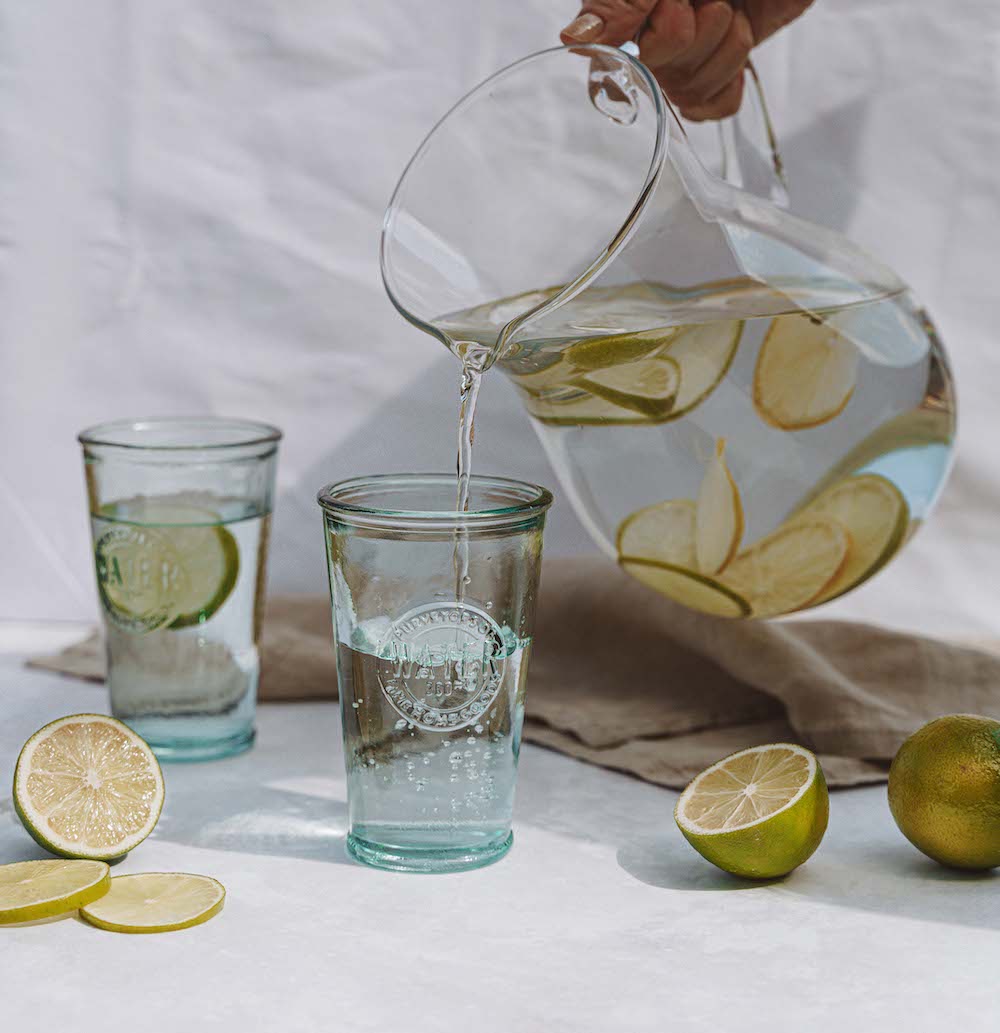0

A few weeks into the lockdown and you have hopefully carved out some vague sort of routine by now. You may be taking the rare opportunity to get to know yourself, indulge in some much-needed self-care, and maybe even catch up on your reading, writing, or other nourishing pastimes.
Under the current circumstances, you would be forgiven for putting your health regimen on the backburner. But although you needn’t be fretting about your “beach body” right now, it’s more important than ever to keep both physically and mentally strong – and you can’t do that on a diet of kid’s cereal and plain pasta.
But how – I hear you ask – are we expected to maintain a varied and nutrient-rich diet when demands are high, supplies are slim, and we have to either brave the masked and potentially infected crowds at our local supermarket, or spend hours in the virtual queues at the overwhelmed online check-outs?
Don’t worry – here are a few staples that are not only economical. versatile, and highly nutritious – but you may find easier to get a hold of since they may not be the first items that you’d think to go for:
Although the pasta scarcity seems to have calmed somewhat, some people are still struggling to get hold of this much-loved cupboard staple. If your pasta-cravings are still woefully unmet, or you just want to shake up your meal rotation – but only the slightest bit – I recommend going for the many pasta alternatives out there today. Whether it’s in the form of spelt, rice, corn, lentil, chickpea – or whatever other kind you come across – not only can these alternatives fit into your existing tried-and-tested recipes, but they offer a slightly different flavour as well as a whole host of other nutrients you won’t be getting from the plain white stuff. And since it’s the regular pasta that everyone else is going for, you are more likely to fill your basket if you are a little flexible.
On the other hand, if you want your pasta to taste like pasta but are still open to diversifying your carb repertoire, then go for a different easily substitutable grain such as couscous, quinoa, taboule, or good old rice.
Speaking of healthy carbs… perhaps a no-brainer for many of you, but I feel oats still deserved a top spot on this list nonetheless. As a long-lasting, satiating breakfast staple rich in iron, fibre, manganese, magnesium, and countless other nutrients, we could all do with some more oats in our life – especially right now. Whether you prefer them cold in the low-effort form of overnight oats, or cooked in the traditional and wholesome porridge form, combine with fruits, nuts and seeds of your choice for the ultimate start to your day.
If you’re not yet an oatmeal convert, I recommend adding a little water as well as your milk of choice to ensure there is enough liquid, even if this means a longer soaking or cooking period, and adding a flavour you enjoy such as vanilla extract, cinnamon, cocoa, or maple syrup as well as some variants in texture such as almonds, raisins, or chia seeds. Not only does this make your oats reach a new level of deliciousness, but also adds even more nutrients to the mix, making sure you maintain that healthy glow.
Pro tip: Opt for the basic kind, even though they require a little more prep – not only are these more economical, but they are also much healthier as they are unprocessed with no sugar or flavourings added – and better in taste!
The legume family includes beans, peas, and lentils. One of the main reasons I highly recommend incorporating dried legumes into your weekly meal plan is their hard-to-match nutrition profile. For instance, dried beans contain up to 100 times less sodium than their tinned counterparts, and are higher in vitamins and minerals such as iron, calcium, and magnesium. Dried beans are also much more economical and come in a tonne of varieties.
You can blend them into a paste such as hummus with chickpeas – or whatever other kind of bean or lentil for a variation. You can add them to your pasta dishes, stews, soups, or simply serve with rice or on toast for an easy protein and mineral boost. So now that you have both the time in the kitchen and more of a need to be both price and nutrition-smart, it really is worth the effort to whack some dried beans, chickpeas, and lentils onto your next shopping list.
If patience in the kitchen is not your thing, but you are still in need of some affordable (and available) protein, then the plant-based section could be your new best friend. Hear me out – if you’re not a vegetarian or vegan yourself, you may have heard some bad things about these “meat alternatives,” – but we have come a long way since the tough soy disks you may have had once at a friend’s house before you committed to a life on carnivorousness. Even if you’re not about cutting out meat altogether, right now, it’s quite likely you are having to be more flexible with your grocery demands, and branch out a little in order to meet your nutrient and satisfaction needs.
There are so many options now available that are not only packed with nutritious ingredients such as beans, lentils, mushrooms, tofu, or seitan – and in the form of mince, burgers, sausages, or pieces – but they are super easy to prepare (with no risk of deadly diseases…) and incorporate into the recipes you already know. On top of all that, despite their recent surge in popularity, they haven’t overtaken demand for regular meat just yet – so they may be your best bet if you are worried about living off nothing but carbs for the foreseeable…
With your trips to the supermarket or your grocery deliveries likely much more sporadic these days, you may be missing out on your usual supply of fresh fruits. Some fruit, such as berries, don’t last longer than a few days. And since these easily perishable fruits also tend to be some of the richest in antioxidants and vital vitamins and minerals, it’d be a real shame to cut these out or reduce your intake at a time when these health benefits are more valuable than ever. A great way to make sure you always have fresh fruit to hand is to buy frozen. Not only is this more economical, as you can buy a big bag for the price of one of those tiny punnets, but research shows that freezing fresh produce shortly after harvesting actually means that even more of their nutrients are preserved than if you consume them a few days after picking. The same goes for veg of course! Though this is perhaps more obvious.
So why not add a few different frozen fruits to your list next time you shop? This way, you can have a different combination each day to keep your daily breakfasts or snacks interesting – while avoiding waste. Whether you leave them a few hours to defrost, heat into a compote, or add them frozen directly to your cereal bowl or smoothie – you can be sure you are getting the nutrients you need in a delicious way.
I’ve already discussed in previous articles about the importance of Omega-3 for hormone balance and mental health. It is also great for your skin and immune system. Unfortunately, this is also perhaps one of the easiest nutrients to skip or forget about when your meal plans are a laughable memory of the past. An easy and affordable way to make sure you have an adequate intake of this healthy fat every day is by adding chia or flax seeds to your breakfast bowl, salad, or daily smoothie. You can buy either cheaply in bulk, and use as a seedy addition to your recipes straight from the bag, or using a few hacks to make them more versatile.
For instance, soaking chia seeds in cold water for a few hours will cause them to form a thick, jam-like consistency. If you do this in a jar, add some frozen berries and perhaps a little sugar or natural sweetener and you have a homemade nutrient-packed jam-alternative in a matter of hours. Flaxseeds also work wonders when you use water: just whisk one tablespoon with 2 tablespoons of cold water (or simply let sit a few minutes in the same amount of warm water)and it becomes a tasteless egg-like substance that you can use as an egg substitute in your favourite muffin or banana bread recipes.
(Let us know in the comments if you discover any more great hacks like these!)
If you’re still buying dairy milk then now may be a better time than ever to make the switch – at least partially. Not only is it the ethical and eco-friendly thing to do, but these milk alternatives that are usually left on the otherwise-bare shelves taste just as good in cupboard-friendly UHT form, contain much more fibre, have zero cholesterol, are usually fortified with the vital vitamins D and B12, and they can add another dimension of variety to your breakfasts, hot drinks, and sauces at a time where the food monotony can be real.
Gone are the days where soy was the only option – there are now countless options loved by both vegans and non-vegans alike – such as oat milk, rice milk, and coconut milk. The many brands and non-brand options now available on the market usually mean there are often countless options available and in all price categories.
You most likely already know the powers of peanut or almond butter – so I will not preach to the converted there. Keep on doing whatever you’re doing with those if you can still get your hands on them. But my Middle-Eastern nature is compelled to not let you stop there. If you haven’t already jumped onto the tahini bandwagon, then now is a great time to do just that! It’s a crucial component of your homemade hummus, but has countless other uses too.
This sesame seed paste is a staple of most Middle-Eastern homes, as it is packed with copper, healthy fats, some iron and calcium, as well as other nutrients. It’s rich yet slightly bitter taste means that it’s a great base for salad dressings when mixed with lemon juice and salt. However, it is also a fantastic healthy breakfast staple – either drizzled onto your porridge or spread on toast and then topped with something sweet such as dates, sliced apple, or frozen berries (or indeed, your homemade chia berry jam!)
Pro tip: opt for a large jar of the runny, traditional stuff from your local Middle Eastern supermarket or Amazon if you can – as this is not only a lot cheaper than the overpriced little jars in mainstream supermarkets, but it also tastes a lot better!
One thing to bear in mind is to shop responsibly, smartly, and flexibly.
Responsibly, because despite what the fearmongers claimed, the food supplies are not running out any time soon. If everyone simply buys what they need with perhaps a little extra as a cushion in case they fall ill, then there is more than enough to go round.
Smartly, for instance: if you do feel like your local big-name supermarket is somewhat limited or too pricey for what you need, then give your local ethnic supermarkets or health food shops a go – they tend to have all your usual items and but in larger quantities and for much lower prices – especially if you are looking to buy rice, legumes, or nuts in bulk.
And creatively, because although you may not be able to get a hold of your usual favourite items right now, making simple swaps such as to your type of pasta or milk as discussed above, or trying new foods such as tahini or plant-based meat, may be the best way for you to stay healthy and satisfied during this strange period.
This situation won’t last forever, but while it does, those who are open to adapting are the ones who will thrive!
Do you have anything you’d add to this list? Let us know in the comments!
Roxanna. Xx

-


Dr Singh is the Medical Director of the Indiana Sleep Center. His research and clinical practice focuses on the myriad of sleep.

It must be that time of the month again…or is it? Wait, didn’t I just get my period a couple of weeks ago? So, why am I so bloated? While most of us expect to feel bloated during our period,

The Pill has a whole slew of well-known side effects ranging from inconvenient breakthrough bleeds to headaches, abdominal pain, and nausea. And, anyone who’s ever used hormonal birth control knows that the side effects are not just physical. They’re psychological

Have you ever experienced spotting? Have you wondered whether it is normal or whether you should be concerned and visit a doctor? Being a woman is hard and can be so confusing! We are all different and sometimes it is
Hormona© 2024, All Rights Reserved
